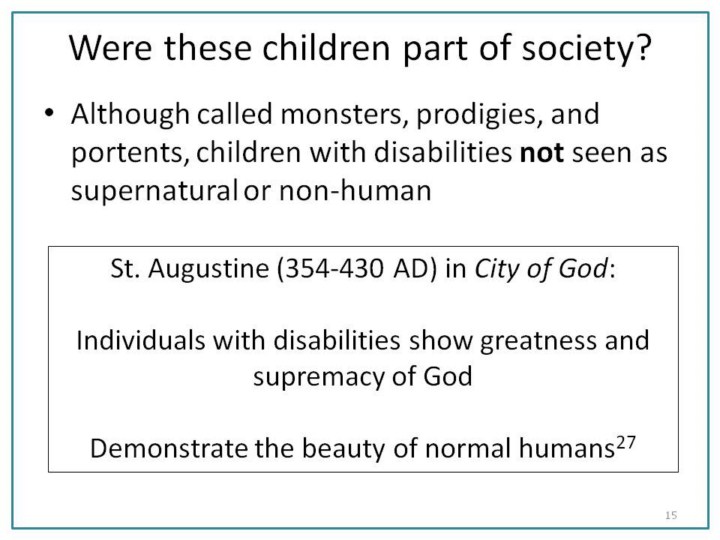| front |1 |2 |3 |4 |5 |6 |7 |8 |9 |10 |11 |12 |13 |14 |15 |16 |17 |18 |19 |20 |21 |22 |23 |24 |25 |26 |27 |28 |29 |30 |31 |32 |33 |34 |35 |36 |37 |38 |39 |40 |41 |42 |43 |44 |45 |46 |review |
 |
The interpretations and actions of ancient societies did not accept infants with deformities into society. If a child survived into adulthood, he or she would often be treated with fear or suspicion. Despite these actions, these individuals were not considered to be non-human or supernatural. They were generally considered to belong in the human family. When St. Augustine addressed the subject in City of God, he stated that abnormal infants were human and created by God. Their purpose, he states, is to demonstrate the greatness of God and the beauty of normal human beings.28 St. Augustine did not promote more humane care, but his argument placed these frightening infants in the spectrum of the natural world. |